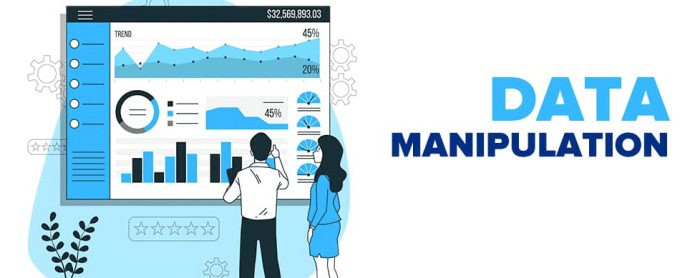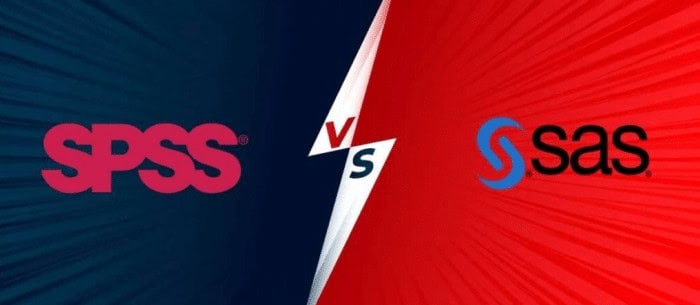Do you think organizing and analyzing large amounts of data might be challenging? Hence, SPSS and SAS tools come in handy. They are tools that help make statistical analysis more accessible. They can handle a large amount of datasets efficiently.
The language in SAS is more challenging and complex to learn than SPSS as it is very straightforward. Also, SAS has more support options than SPSS. SPSS has different built-in graphs and charts, whereas SAS has more analytical capabilities. SAS and SPSS can perform basic data manipulations, but SAS has more advanced features for more complex data handling, whereas SPSS is better at performing simple tasks. Also, SPSS is easier to use and navigate than SAS.
SPSS vs. SAS is among the most asked questions, especially from business owners and analysts. This article will compare SPSS with SAS to understand which is better suited for your business needs.
Table of Contents
Program Structure
You need to know the program structure before you decide which software is best for your needs.

SPSS is a data analysis tool that enables users to conduct statistical analysis and data mining. In contrast, SAS is a programming language that enables users to conduct statistical analysis and data mining.
SPSS has an easy-to-use interface with drag-and-drop functionality, which makes it easier for nontechnical users who may have never used any other type of statistical software before. However, SAS has many more features than SPSS, including graphs and visualizations that allow you to compare variables (for example, the mean age of males vs. females).
The difficulty of Coding
The language of SAS is more challenging to learn, and it’s also a more complex language. In SPSS, the syntax is more straightforward. So you can begin using it immediately without spending time learning how to code your data.

While the syntax of both languages is similar enough that they’re sometimes referred to as “open-source” programs (meaning they’re not proprietary). Some differences between them make one better suited for certain types of analysis jobs:
Coding Errors: When using an open-source program like R or Python, you can make mistakes while creating code because there aren’t any consequences if those mistakes happen during runtime—you don’t have access or ownership over what gets created by others who use these tools in their projects (like creating reports).
This can cause problems later down the road when trying out new ideas with existing models already built up within another project which may contain errors made during the prior development phase.
Availability of Support
SAS has more support options than SPSS, R, and Python, and SAS has more support options than Stata and Excel. If you need software that supports your language of choice (Python, R). Then it may be worth paying the extra money to access those libraries and the standard ones.
Inbuilt Support for Analytics and Graphs
SPSS has many graphs and charts built in.
SAS has more analytical capabilities. The difference in price between these two software programs can be significant. With SPSS costing $99/month or less and SAS costing over $4K/year for an enterprise license (although you may be able to obtain a discounted rate).

SAS is more expensive than SPSS but offers a broader range of analytical capabilities. This might be worth paying for if you need more sophisticated reporting abilities.
You can use a scripting language like SAS’s C, C++, or Java; an interactive programming language like Python or R; or even a text editor like Notepad++.
SPSS uses its proprietary language, SPSS-P(pronounced “specs”), which is not open source and cannot be used on platforms other than Windows. If you want your data analysis project done with SPSS, you’ll have to use the same version of Windows that they use (currently 10).
Data Manipulation Capabilities
Data manipulation capabilities are an essential factor in the overall quality of a data analysis and reporting tool. While both SAS and SPSS can perform basic data manipulations, SAS has more advanced features for more complex data handling.

SPSS is better at performing simple tasks, such as moving or renaming variables or dropping columns from tables (i.e., deleting them). However, it needs more advanced tools for more complex tasks, such as aggregating multiple columns into one column or collapsing duplicate rows within a table (a common issue when working with large datasets).
Licensing Cost and Options Available to Small Businesses & Students
SAS is available in various licensing options, the most popular being the SAS Enterprise Guide. This software package helps you to manage your data and create reports, graphs, and dashboards, which both small businesses and students can use.
SAS Enterprise Guide is an online service that allows users to access their data from anywhere on any device connected to the internet. Users can also collaborate with others who use this service through instant messaging (IM), file sharing, or video conferencing rooms.

SPSS is much easier to use and navigate than SAS. However, it is essential to remember that SAS can carry out more tasks in terms of analytical capabilities.
SAS has a larger community of users and support. Many more people can help you when something goes wrong with your software. This can be advantageous if you need assistance with complex tasks. Or want someone else’s opinion on doing something in your program.
These were the comparison of SPSS vs. SAS.
See also: SPSS Vs. R: Detailed Comparison
FAQS
Is SAS superior to SPSS?
No. The documentation for SPSS is significantly better and explains the statistical methods' underlying algorithms. SPSS simplifies modeling, while SAS's command-line interface and extensive editor coding give it more power. The visual interface of the SAS Enterprise is inferior to that of SPSS.
Do companies still use SPSS?
Yes. A popular program for statistical analysis in companies is SPSS. It is also utilized by data miners, government agencies, survey firms, market researchers, health researchers, survey companies, and others.
What is the limitation of SPSS?
One of its fundamental limitations is the inability to use SPSS to analyze massive data sets. There are some fields where the volume of data is substantial. There may be better choices than using SPSS in many sectors.
What exactly is SAS best used for?
SAS is a command-driven program used for data visualization and statistical analysis. You can use SAS with the operating system of Windows. It is, without a doubt, one of the statistical software packages utilized most in academia and business.
Can SPSS handle large datasets?
Yes, SPSS can handle datasets with millions of cases and thousands of variables. It makes it appropriate for extensive assessments and research tasks.
What does SPSS cover?
SPSS can cover statistics from almost any type of file to produce tabulated reports, charts and graphs of distributions and trends, descriptive data, and intricate statistical analyses of behavioral data.
Conclusion
SPSS is an excellent choice for small businesses or students who want easy-to-use data analysis tools. SAS is a good choice if you are looking for advanced analytics capabilities, such as graphs and statistical tests. Thus this was all about SPSS vs. SAS.
See Also: How To Display Current Time In HTML | 4 Easy Ways

